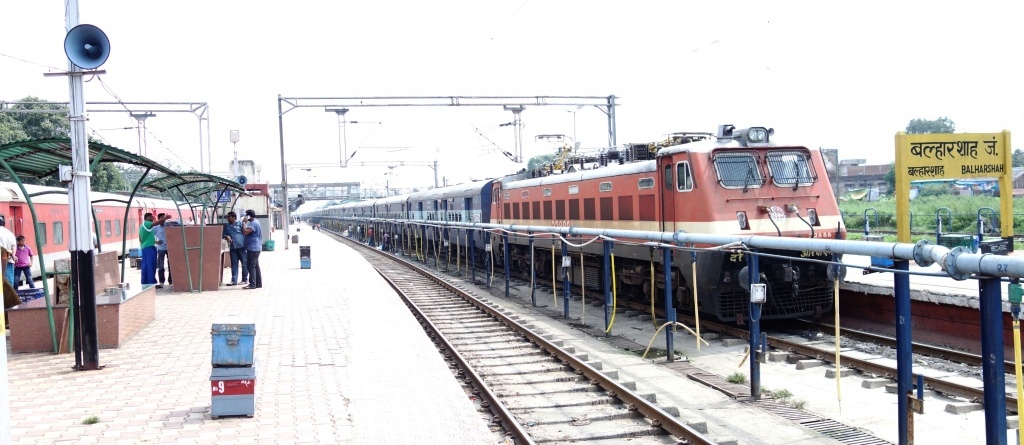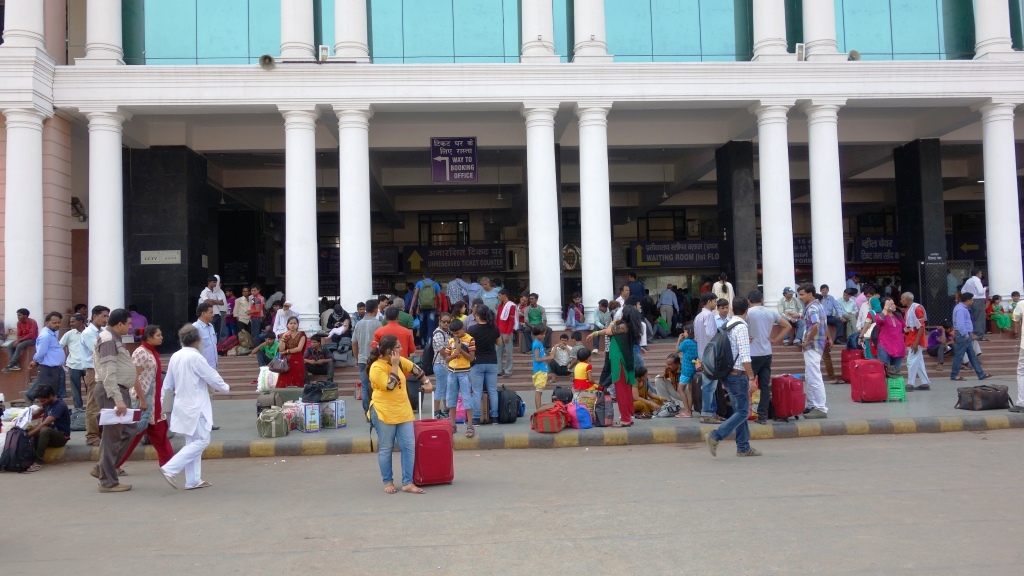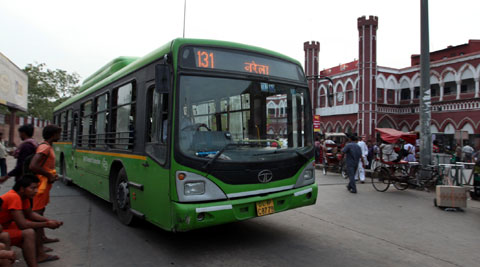Multi-modal Passenger Transportation System-a hope for many
There was news the other day (http://articles.economictimes.indiatimes.com/2014-12-12/news/56990301_1_signalling-system-speed-train-transportation) that “Railways to bring multi-modal transportation system” This is what the Mr. Suresh Prabhu Minister of Railways has spoken during Agenda Aaj Tak
“Muti-modal transportation system is what we need today. I am talking to all Chief Ministers for bringing a multi-modal transportation system. We will go to the cabinet with the proposal”
“It will involve multi-agencies like Metro and other modes of transportation”
“After de-boarding the trains at the station, one needs to go further to reach his place. Unless we have an integrated approach it will not serve the purpose”
He suggested that a special corporation can be formed in each state and each city for this purpose. “The system will also improve suburban rail service.”
What is there in MR’s mind is not known. Has the proposal for cabinet approval initiated? Only time will tell the problems associated with it. The BJP manifesto for Lok Sabha election 2014 also talks about it, and thus, everyone hopes it will come true. The railway is in the best position to take the lead.
- The Multi-modal transportation system has been discussed and talked about in many forums, but the outcome, though concluding in right earnest, did not make any impact at ground level. Indian Railways had a leading role in this requirement, but its adamant attitude towards not providing access of its facilities to other stakeholders is the major reason for its failure. Why DMRC is not connected well at New Delhi and Delhi station is an example where there is no direct transit for the passenger between each facility.
- There is no doubt that money spends by a passenger for the peripheral travels before and after the regular train journey is considerably very high at the rate of Rs. 15-25/- per km as compared to only Rs. 1-3/- for a regular train journey. Multi-modal transport system will benefit the passenger in reducing total expenditure incurred towards the journey.

- This will help in reducing the use of the private vehicle for the journey to the Railway Station and will encourage the use of public transport. Encouraging public transport is part of BJP manifesto. In order to make its intention clear, the first step in this regard is to open the drive-in parking for public buses at New Delhi, Delhi, Mumbai, Kolkata etc.

- Why look towards other agencies to participate and cooperate when there is scope to initiate the process of connecting within their own jurisdiction. IR is running two classes of trains namely Main/Express/Rajdhani etc. and other passengers/EMU/Memu type trains. There is no planned and time tabled connectivity between these two types of trains. All developed Railways, whom we intend to copy for modernization of Railway system, plan connectivity, and show it on the timetable as an alternative travel route. Why this is not possible in India? There are a few examples to work on this
- There is a system of calling trains like Rajdhani, Shatabdi, Duranto etc. Is it not prudent on the part of Indian Railways to define these trains such as arrival/departure times, Maximum permissible speed, stoppages, catering etc.? When Howrah Rajdhani was introduced, it was stated that the arrival and departure time at New Delhi shall be 10 hrs and 17 hrs respectively. Had we defined the trains in this manner, the absurdity which exists today would have been avoided? Indian Railway has to fix certain standards in train timetabling, unless it is done, multi-modeling will never be possible.
- In any case, there are large many trains arriving within a time period of one hour at the major metro station, and it is possible to connect EMU/MEMU train for departure and arrival towards all possible directions, such as Saharanpur, Shamli, Hapur, Khurja, Sonepat, Alwar and Mathura to transport passengers towards and from their home town. Because of no connectivity and also no system of integrated ticketing, the passenger looks for another mode of transport. Not only IR loses traffic, but also adding another vehicle on the Road.

- Multi-modal transport using buses to pick up the passenger from a Railway station is unlikely to succeed because IR comes forward to share its parking lot for the buses; therefore, it is necessary that IR shall make up its mind for the procedure to succeed. When this is agreed to, the immediate step to go for a multi-model ticketing system. With IT, all of this possible.
- MR is contemplating the formation of Corporations with each State to develop a sub-urban network and convenient connectivity of passengers including other modes of transport. This is in line with MRVC, but its business is limited to developing Mumbai sub-urban rail network only.
- The suburban network is the backbone of the multi-modal transport system. What is the policy of Indian Railways towards the suburban network is almost impossible to understand, imagine or interpret from any of its action?
- A good sub-urban network is a great help to the State Government and for this reason, Kerala and Karnataka Government are making efforts to rope in Indian Railways towards this mission. Unfortunately, IR follows only what is dictated by political bosses. MR shall take immediate steps to form KRVC and Bangalore Rail Vikas Corporation so that success stories are built to rope in other states.
- Ministry of Urban Development has initiated a step to form a NCR Transport corporation to build a suburban network on lines of the urban metro network at the cost of approximately 250 Crs/Km. What a waste of money? The same purpose can be achieved by IR at a rate of Rs. 10 Crs. /km by quadrupling the existing two-line network and running the sub-urban network on lines similar to Mumbai suburban network. Why IR had been a silent spectator when NCRTC was being formed and instead agreed to share the money in this wastage.
- It is important that IR shall show its commitment towards the suburban network, which is being completely ignored on the ground that it is a loss-making system. IR has started losing freight traffic to the road because road provides the advantage of door-to-door service and it is now denting into passenger traffic as well. The day is not far when a passenger traveling up to 300 Km will shift to the road because it provides door to door service, comfortable as buses, plenty of seat availability, express highway, etc. Indian Government is committed to building highways and expressways which will encourage bus operators and will be cutting into IR share.
- There is a lot of talks to build High-Speed network as IR is losing traffic share to Air. IR shall not waste its energy to compete with Air and instead concentrate to compete with Road. Building HSR is projected like Konkan Railway, J&K Rail project, Metro Railway, Kolkata which will act more of a showpiece at the cost of the Government Exchequer with negligible earning for the Railways. If IR can think of generating funds for HSR than why not look for the suburban network, which will benefit a very large section of the poor and lower middle population. When the BJP Government at the Centre is committed towards the poor, then the improvement of the suburban network is the biggest gift to them.
- This is the right time that IR shall come out of its shell and offer its services to improve sub-urban network. No one denies it requires huge investment and the same shall be arranged on the funding pattern as followed for MRVC.
You may also like:
- Where has 150 millions Indian Railway passenger gone?
- ‘Rescue’ Indian Railway passenger business through statistical indices ‘RSKU’
- Mechanized measurement and inspection – a help to cut down…
- Why no steps to digitize issue of free travel pass…
- Why IR passenger traffic heading south?
- Average speed of freight train over Indian Railways